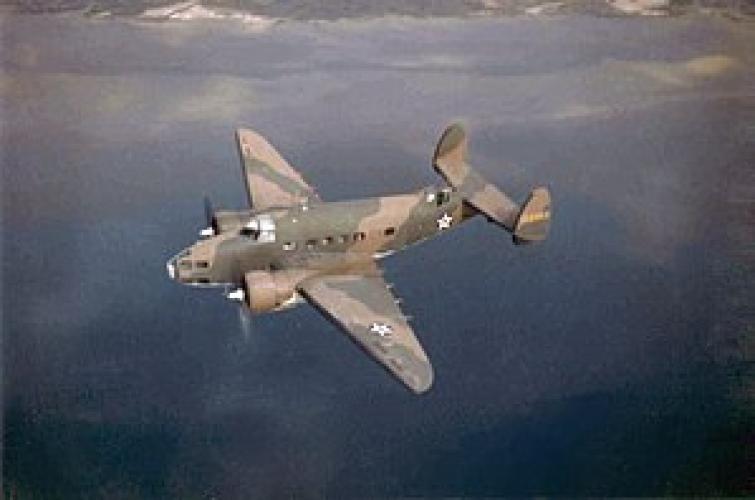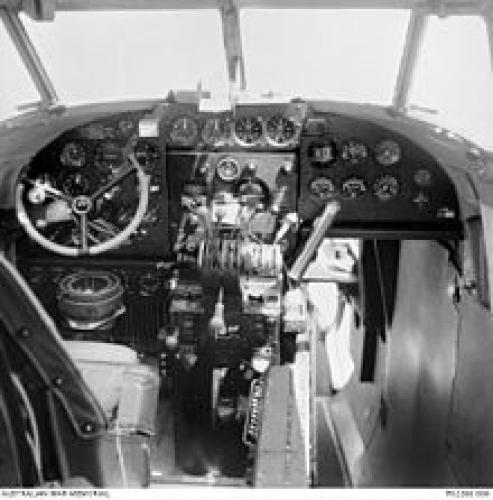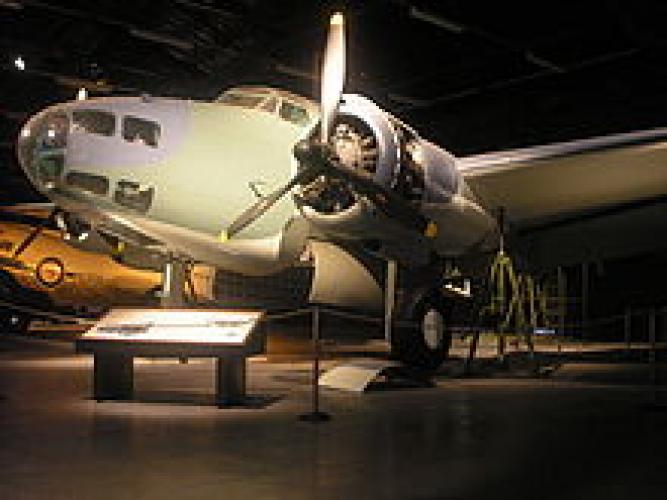129 Hudson Ave Upper Hutt, street scene 2018
Reason for the name
The Lockheed Hudson was an American-built light bomber and coastal reconnaissance aircraft built initially for the Royal Air Force shortly before the outbreak of the Second World War and primarily operated by the RAF thereafter. It was an aircraft used by the RNZAF to train New Zealand aircrew during the Second World War. It is one of four streets created as part of a 1949 subdivision whose names memorialised aircraft New Zealanders had served in during World War 2.
The land on which Hudson Avenue was built had previously been farmland. It was owned by Tom Coltman, proprietor of the Grand Hotel in Wellington. Coltman decided to subdivide his property into eighth-of-an-acre sections to be sold off by Upper Hutt estate agent Arthur Birkett. According to Birkett’s son, Barhan, Tom Coltman wished for the new roads planned as part of this development to be named after WWII aircraft.1 This was to honour his son Jim’s service with the RNZAF during the War. Military records for Flight Officer James Coltman show that he had personal experience flying at least three of the four aircraft after which these streets were named.
Upper Hutt Borough Council records indicate that in early 1949 the Council set up a sub-committee to oversee the formal process of approving street names for the Coltman subdivision. At the March 16th meeting of this sub-committee the Mayor, E. W. Nicolaus, reported that he had met with solicitors for Mr Coltman and they had conveyed to him their client’s wish for the new streets to be named “after types of bomber aircraft”. A motion was then passed recommending “that His Worship the Mayor be authorised to arrange for the naming of the streets in accordance with the latter suggestion. This decision was subsequently ratified at a full Borough Council meeting on April 20th and publicly announced in the April 28th edition of the Upper Hutt Leader
Author: The Poppy Places Trust
The Lockheed Hudson was an American built light bomber and coastal reconnaissance aircraft built initially for the Toyal Air Force shortly before the outbreak of the Second World War and primarily operated by the RAF thereafter. The Hudson was the first significant aircraft construction contract for the Lockheed Aircraft Corporation—the initial RAF order for 200 Hudsons far surpassed any previous order the company had received. The Hudson served throughout the war, mainly with Coastal Command but also in transport and training roles as well as delivering agents into occupied France. They were also used extensively with the Royal Canadian Air Force's anti submarine squadrons and by the Royal Australian Air Force.
World War 2
By February 1939, RAF Hudsons began to be delivered, initially equipping No224 Squadron RAF at RAF Leuchars, Scotland in May 1939. By the start of the war in September, 78 Hudsons were in service. Due to the United States' neutrality at that time, early series aircraft were flown to the Canada–US border, landed, and then towed on their wheels over the border into Canada by tractors or horse drawn teams, before then being flown to Royal Canadian Air Force (RCAF) airfields where they were then dismantled and "cocooned" for transport as deck cargo, by ship to Liverpool. The Hudsons were supplied without the Boulton Paul dorsal turret, which was installed on arrival in the United Kingdom.
Although later outclassed by larger bombers, the Hudson achieved some significant feats during the first half of the war. On 8 October 1939, over Jutland, a Hudson became the first Allied aircraft operating from the British Isles to shoot down an enemy aircraft (earlier victories by a Fairey Battle on 20 September 1939 over Aachen and by Blackburn Skuas of the Fleet Air Arm on 26 September 1939 had been by aircraft based in France or on an aircraft carrier). Hudsons also provided top cover during the Battle of Dunkirk.
On 27 August 1941, a Hudson of No269 Squadron RAF, operating from Kaldadarnes Iceland spotted the German submarine U570 causing the submarine's crew to display a white flag and surrender – the aircraft achieved the unusual distinction of capturing a naval vessel. The Germans were taken prisoner and the submarine taken under tow when Royal Navy ships subsequently arrived on the scene. A PBO-1 Hudson of the United States Navy squadron VP82 became the first US aircraft to destroy a German submarine, when it sank U656 southwest of Newfoundland on 1 March 1942 U701 was destroyed on 7 July 1942 while running on the surface off Cape Hatteras by a Hudson of the 396th Bombardment Squadron (Medium) United States Army Air Forces, (USAAF). A Hudson of No113 Squadron RCAF became the first aircraft of the RCAF's Eastern Air Command to sink a submarine, when Hudson 625 sank U754 U754 on 31 July 1942.
A RAAF Hudson was involved in the Canberra air disaster of 1940, in which three ministers of the Australian government were killed.
In 1941, the USAAF began operating the Hudson; the Twin Wasp-powered variant was designated the A-28 (82 acquired) and the Cyclone-powered variant was designated the A-29(418 acquired). The US Navy operated 20 A-28s, re-designated the PBO-1. A further 300 were built as aircrew trainers, designated the AT-18.
Following Japanese attacks on Malaya Hudsons from No1 Squadron RAAF became the first Allied aircraft to make an attack in the Pacific War, sinking a Japanese transport ship, the Awazisan Maru off Kota Baru at 0118h local time, an hour before the attack on Pearl Harbour.
Its opponents found that the Hudson had exceptional manoeuvrability for a twin-engine aircraft; it was notable for the tight turns achievable if either engine was briefly feathered.
- The highest-scoring Japanese ace of the war, Saburo Sakai, praised the skill and fighting abilities of an RAAF Hudson crew killed in action over New Guenea after being engaged by nine highly-manoeuvrable Mitsubishi A6M Zeroes on 22 July 1942. The crew, captained by P/O Warren Cowan, in Hudson Mk IIIA A16–201 (bu. no. 41-36979) of No32 Squadron RAAF, was intercepted over Buna by nine Zeroes of the Tainan Kaigun Kokutai led by Sakai. The Hudson crew accomplished many aggressive and unexpected turns, engaging the Japanese pilots in a dogfight for more than 10 minutes. It was only after Sakai scored hits on the rear/upper turret that the Hudson could be destroyed. Its crew made such an impression on Sakai that, after the war's end, he sought to identify them. In 1997, Sakai wrote formally to the Australian government, recommending that Cowan be "posthumously awarded your country's highest military decoration".
- On 23 November 1942, the crew of a No3 Squadron RNZAF Hudson Mk IIIA, NZ2049, (41-46465) after spotting an enemy convoy near Vella Lavella, was engaged by three Japanese floatplane fighters. After skilled evasive manoeuvring at an altitude of less than 50 feet (15 metres), by the Hudson's captain, Flying Officer George Gudsell, the crew returned with no casualties to Henderson Field Guadalcanal.
Hudsons were also operated by RAF Special Duties squadrons for clandestine operations; No161 Squadron in Europe and No 357 Squadron in Burma.
Post war, numbers of Hudsons were sold by the military for civil operations as airliners and survey aircraft. In Australia,East West Airlines of Tamworth NSW, operated four Hudsons on scheduled services from Tamworth to many towns in NSW and Queensland between 1950 and 1955. Adastra Aerial Surveys based at Sydney's Mascot Airport operated seven L-414s between 1950 and 1972 on air taxi, survey and photographic flights.
A total of 2,941 Hudsons were built.
The type formed the basis for development of the Lockheed Ventura resulting in them being withdrawn from front line service from 1944, though many survived the war to be used as civil transports, primarily in Australia and a single example was briefly used as an airline crew trainer in New Zealand.







